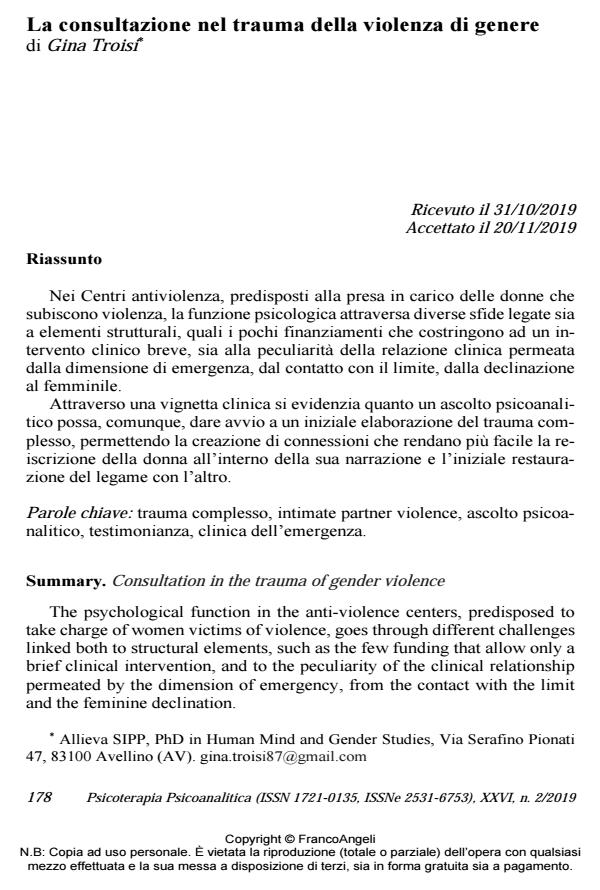Consultation in the trauma of gender violence
Journal title PSICOTERAPIA PSICOANALITICA
Author/s Gina Troisi
Publishing Year 2020 Issue 2019/2
Language Italian Pages 11 P. 178-188 File size 175 KB
DOI 10.3280/PSP2019-002011
DOI is like a bar code for intellectual property: to have more infomation
click here
Below, you can see the article first page
If you want to buy this article in PDF format, you can do it, following the instructions to buy download credits

FrancoAngeli is member of Publishers International Linking Association, Inc (PILA), a not-for-profit association which run the CrossRef service enabling links to and from online scholarly content.
The psychological function in the anti-violence centers, predisposed to take charge of women victims of violence, goes through different challenges linked both to structural elements, such as the few funding that allow only a brief clinical intervention, and to the peculiarity of the clinical relationship permeated by the dimension of emergency, from the contact with the limit and the feminine declination. Through a clinical case it becomes evident that a psychoanalytic lis-tening can, however, start a first elaboration of the complex trauma, allowing the creation of connections that facilitate the inscription of the woman in her narration and the initial restoration of the bond with the other.
Keywords: Complex trauma, intimate partner violence, psychoanalytic listening, testimony, emergency clinic.
Gina Troisi, La consultazione nel trauma della violenza di genere in "PSICOTERAPIA PSICOANALITICA" 2/2019, pp 178-188, DOI: 10.3280/PSP2019-002011